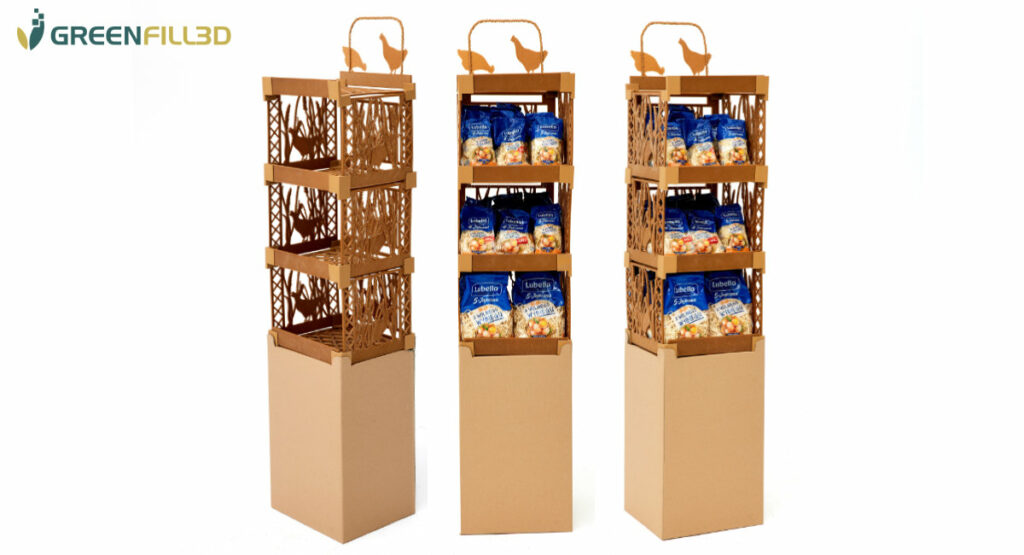I am pretty sure we would never get tired of seeing the development of new materials in the 3D printing industry. Furthermore, with the increasing goal of implementing zero-waste ideas into 3D printing, scientists are almost turning everything into new 3D printable materials.
One of the latest developments that is increasingly gaining momentum is a 3D printing material based on wheat bran. Developed by Polish start-up GREENFILL3D, the material – a waste in the pasta and noodle production process -, is a filament created in collaboration with the MASPEX Group – one of the largest food producers in Europe and in compliance with the modern concepts of zero-waste and circular economy.
The GF3D Branfill3d material is a composite of wheat bran, polylactic acid (PLA) – a popular bioplastic used in 3D printing, and other fully biodegradable ingredients that together give the material unique properties. The parts 3D printed with material are resilient and to some extent flexible (depending on the wall thickness) which makes them quite difficult to break.
A large contribution to these properties is made by the wheat bran fibrous structure, which gives the 3D printed parts resilience as well as smooth surface finish. What’s more, during the 3D printing process, the material offers the scent of baked bread, which stays on the 3D printed parts for a long time.
The production process follows 4 key steps: after MASPEX Group supplies GREENFILL3D with raw wheat bran material, the latter is sieved to the necessary low fraction and patiently dried until there is negligible moisture (wheat bran is very hygroscopic). Wheat bran is thereafter mixed with other ingredients and processed in an industrial environment into a thin filament wire that can be used on an FFF 3D printer. Lastly, GREENFILL3D prints POS (point-of-sales) stands with its 3D printer farm of over 40 machines; each stand consisting of 34 elements.
The result is an advertising stand presenting food products, which was created based on the remains of the same food material. Production wastes – instead of being thrown away or disposed of, were used to produce common tools to support sales, GREENFIL3D explains.

Remember, you can post job opportunities in the AM Industry on 3D ADEPT Media free of charge or look for a job via our job board. Make sure to follow us on our social networks and subscribe to our weekly newsletter : Facebook, Twitter, LinkedIn & Instagram ! If you want to be featured in the next issue of our digital magazine or if you hear a story that needs to be heard, make sure to send it to contact@yosra

